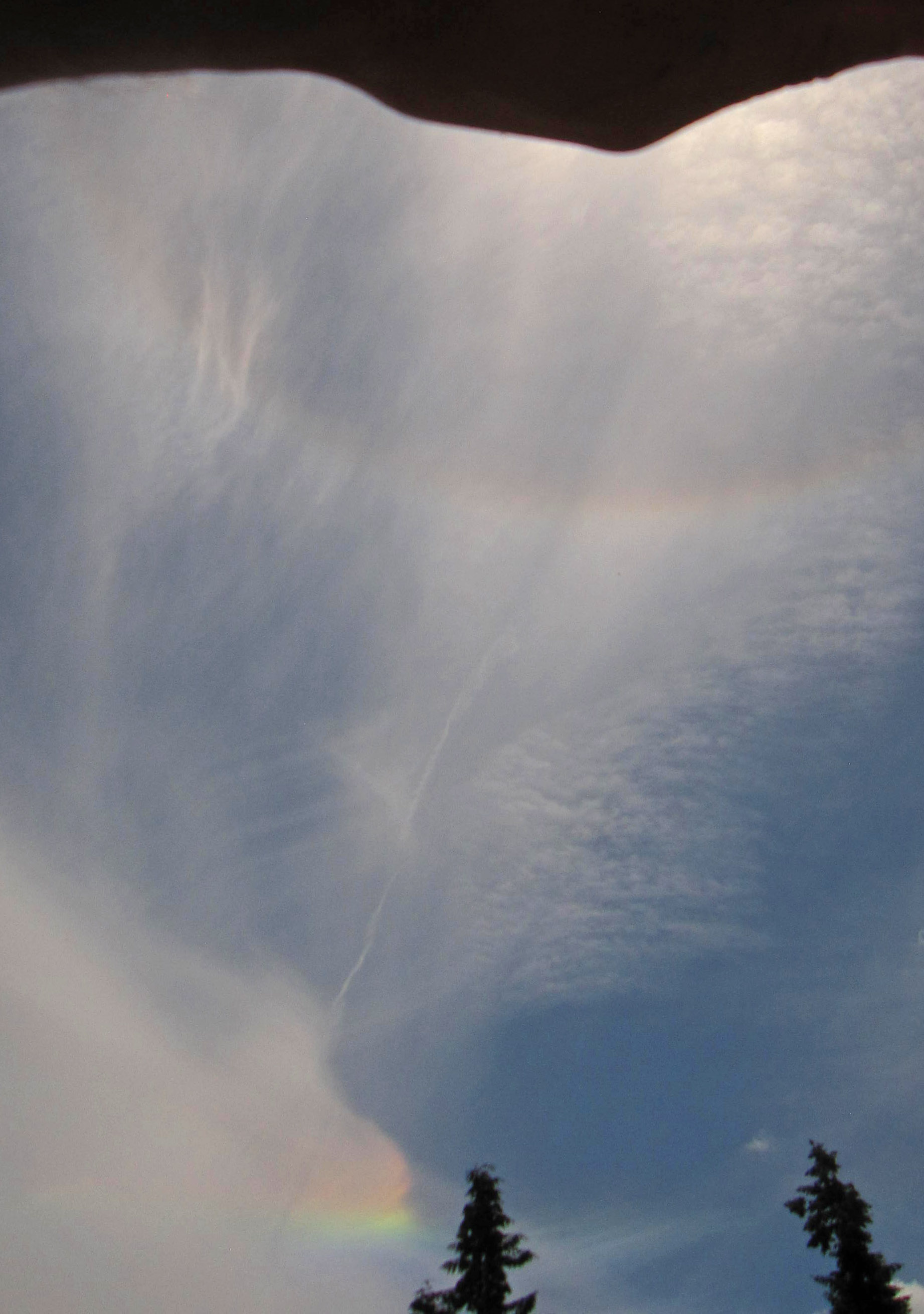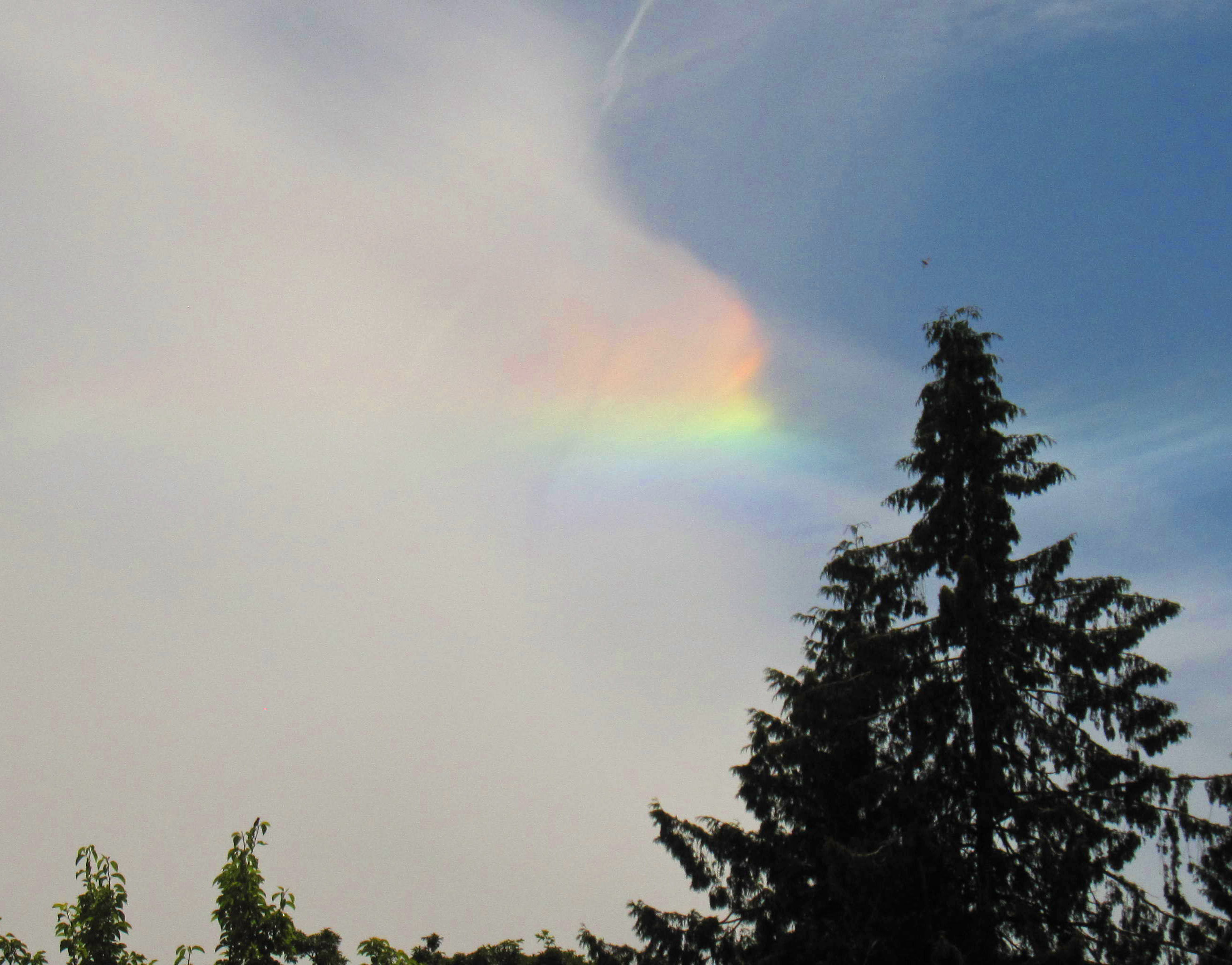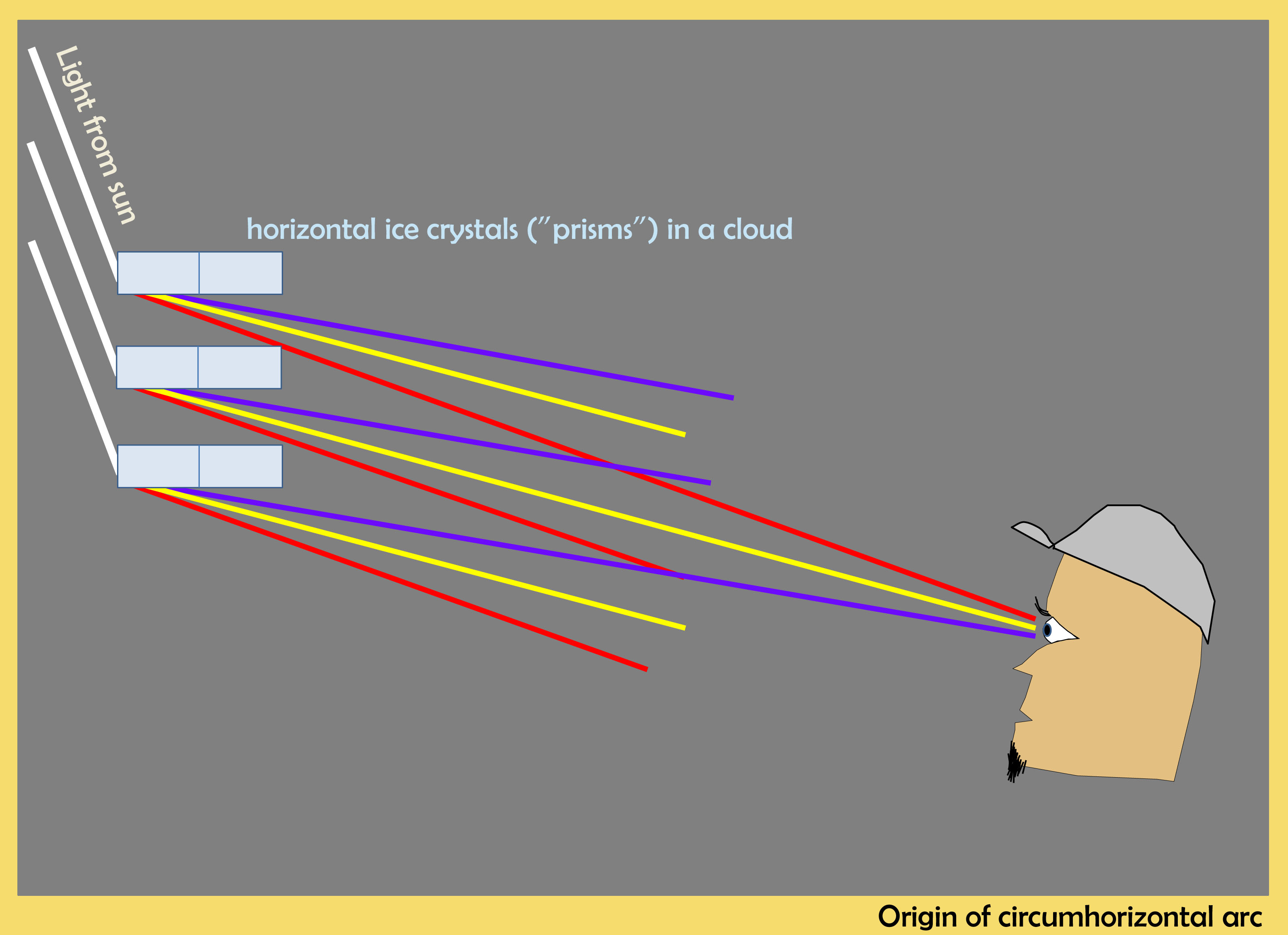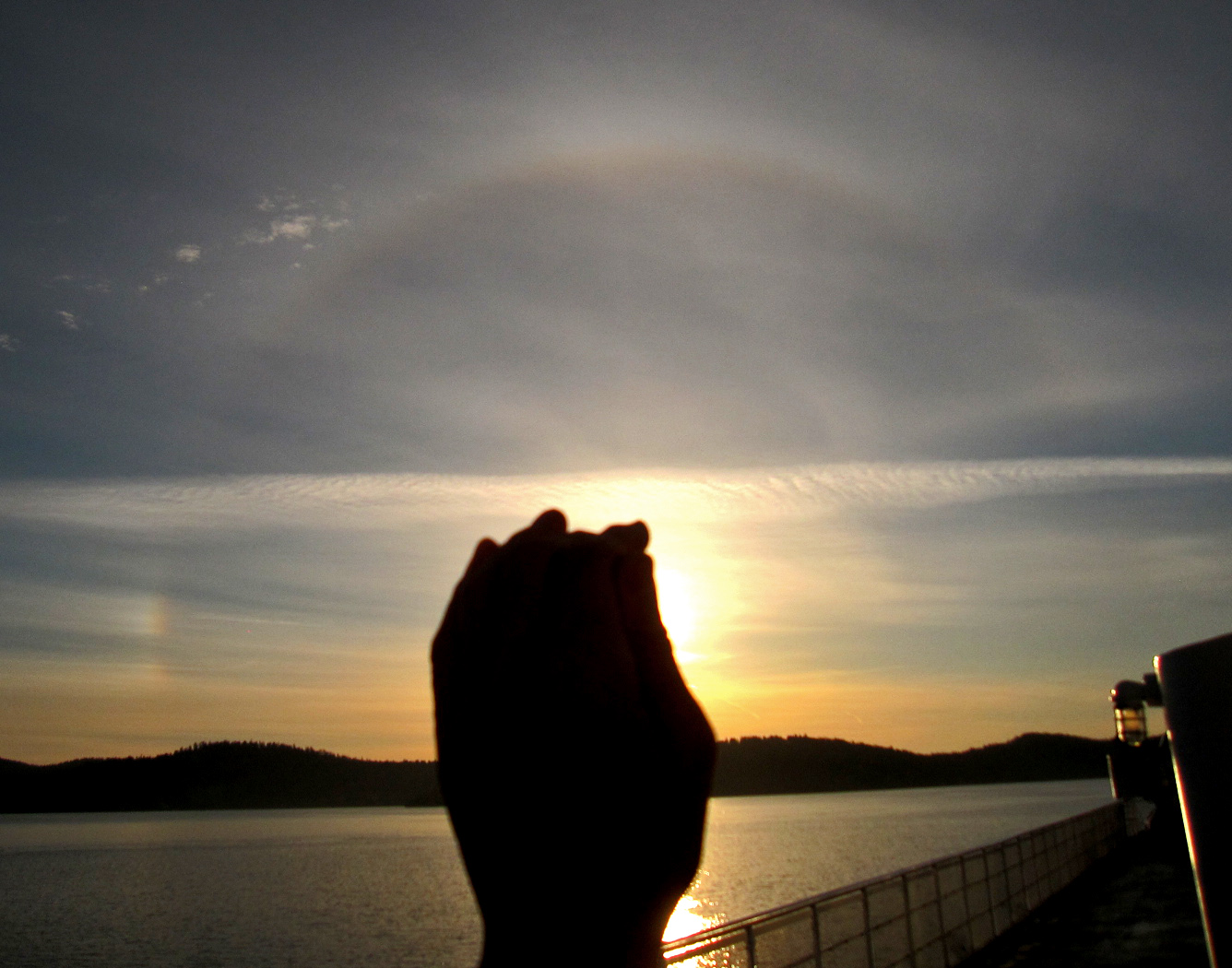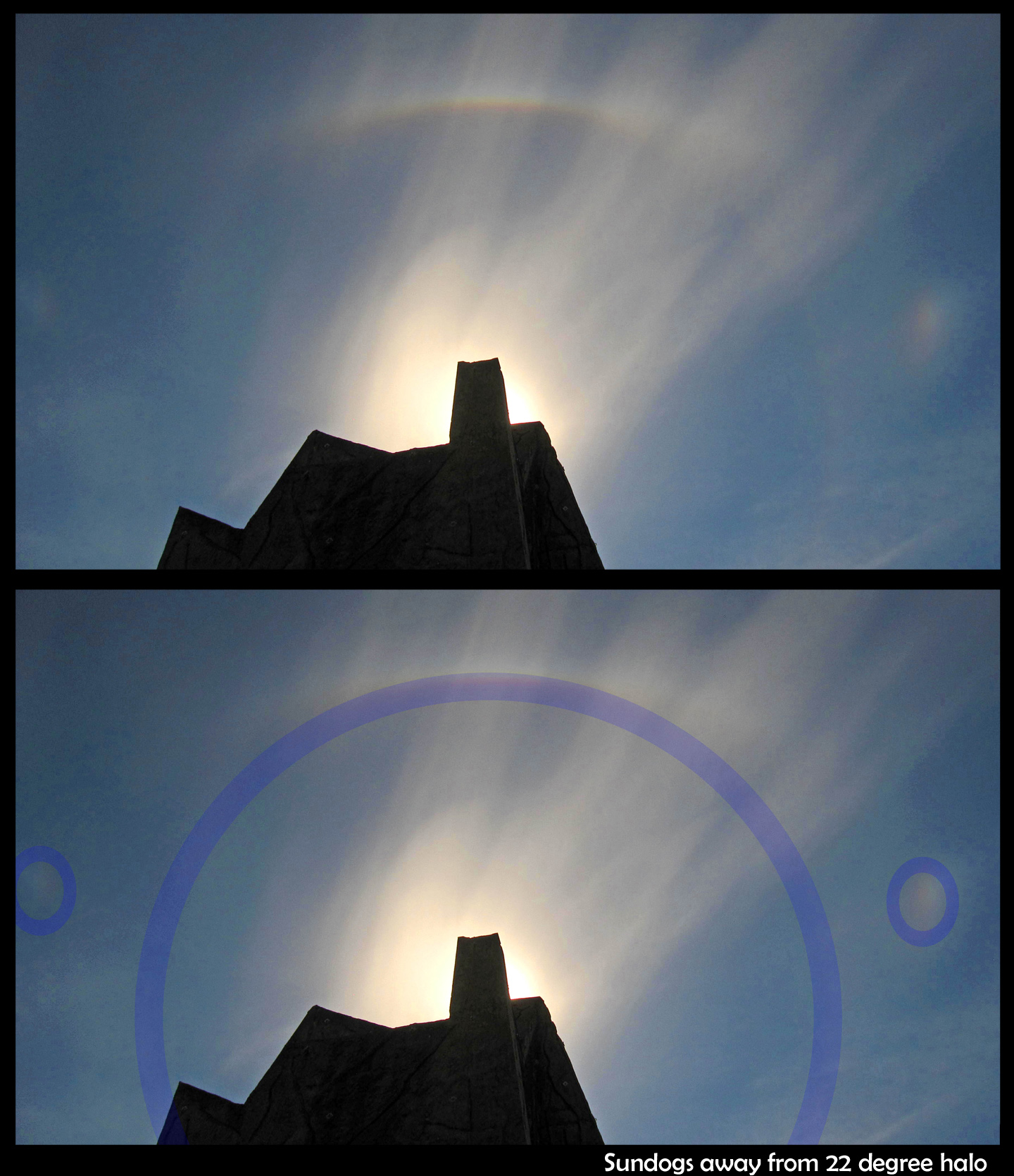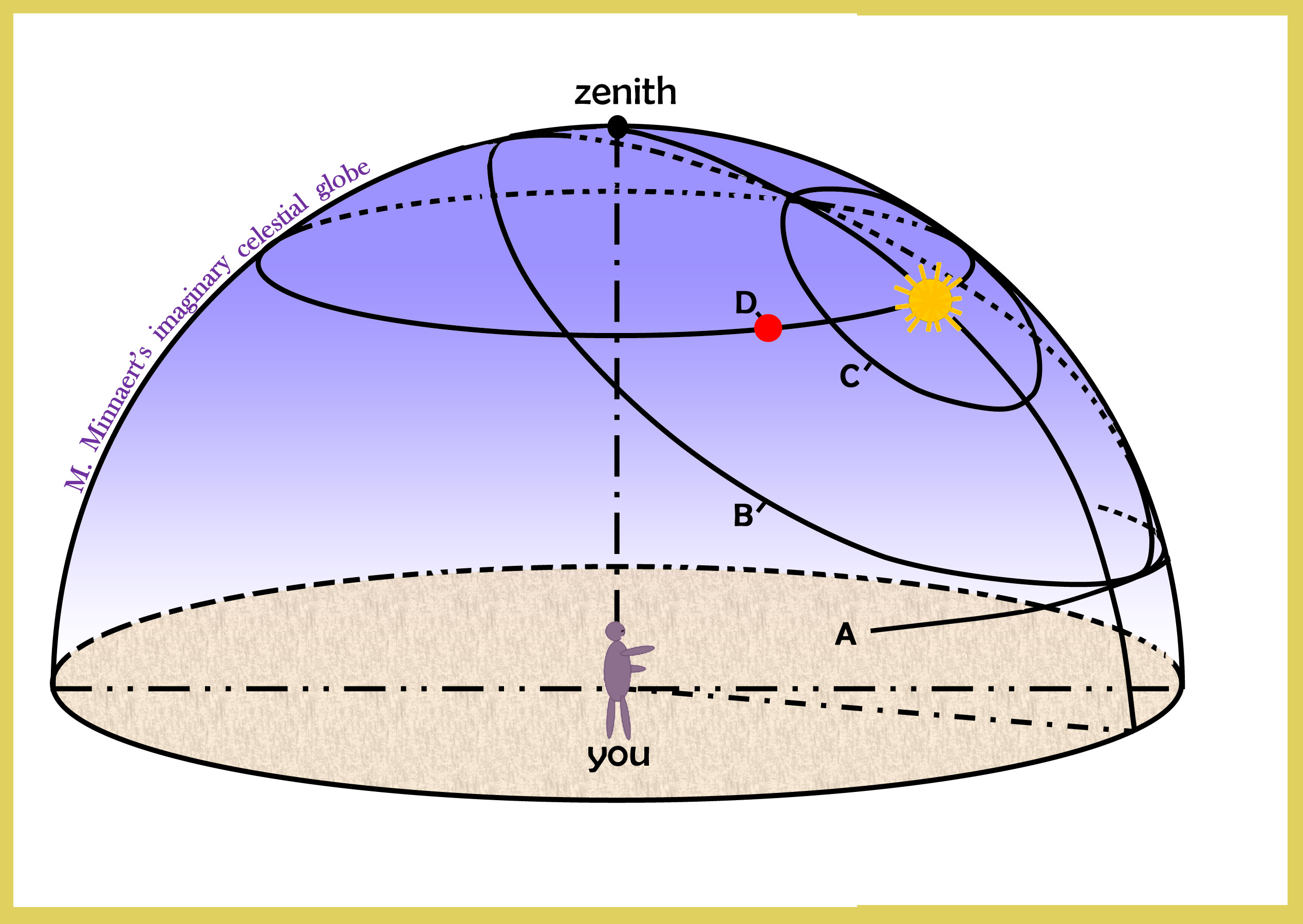| « New habit diagram for branched tabular crystals | The new ice-crystal-growth apparatus » |
It’s not a rainbow (it’s better)
In summer, the sun reaches higher elevations, bringing the possibility of new atmospheric displays. I saw this one in mid-June.
The top, upward arc is the more familiar and common 22-degree halo. But pay attention to the one on the bottom. Its colors look like a rainbow, but it has nothing to do with water drops of any sort.
It is the circumhorizontal arc, and it is as rare as it is beautiful. The colors are, in fact, more pure than those of the rainbow, and its origin is far more remarkable. It is remarkable because of the surprising set of conditions that must hold for it to exist. First of all, the particular region of cloud (at a certain angle to our eye) must consist mostly of ice crystals. Second, the crystals there must be nearly perfect tabular prisms. And third, these crystals must be in sufficiently non-turbulent air and of such a size that they fall in a nearly exact horizontal position:
As shown in the diagram above, the ice crystals act just like small prisms. And like the familiar prisms of glass, they disperse the white light into colors from red to violet. Look at the top crystal. The white light ray enters the side of the crystal, get bent (“refracted”), and splits into colors. The blue ray gets bent the most, making it pass above the observer's eye. In this direction, the observer sees only the red ray, which gets bent the least. To see the yellow, green, blue, and violet, the observer must look lower in the sky, further below the sun. These rays have been bent by crystals lower in the sky. A different observer would see a similar display of colors, but the colors would be coming from different crystals. We are all entertained by different crystals.
Now if the crystals were not so perfectly horizontal, then the colors would get mixed together, as the rays entering the eye at a given angle would come from variously tilted crystals, each sending a different color. The colorful band would instead be just another region of white cloud. How can they stay so perfectly horizontal while falling? It seems so remarkable!
You might notice that this ordering of colors (blue on bottom, furthest from the sun) is the same as that of a rainbow. But actual rainbows (i.e., from drops) can be observed only in the direction away from the sun. Moreover, the rainbow requires a low sun (must be below 42 degrees, if one is standing on the ground), whereas the circumhorizontal arc requires a high sun (above about 58 degrees). This time, the arc is just a small patch of color. The only other time I've seen it, the band of colors spread out into a much wider arc.
Something else to look for with the high-sun displays: the wandering sundogs. The sundogs usually linger at the margin of the 22-degree halo, as seen in the shot below:
In the above shot, notice how the halo is distinctly brighter on the left side. This is one of the sundogs. (An even better example is the first image of the April 20th, 2014 post below.) But as the sun gets higher, each sundog moves out. The following shot shows this phenomenon. See the circled sundog on the right in the lower image.
Both of these phenomena are sketched in Minneart’s celestial globe below.
Here, A is the circumhorizontal arc (I wish we had a simpler name for this!), which is lying on a wide circle around the zenith. B is the wide (46-degree) halo, C is the small (22-degree)halo, and D is one of the two sundogs, which lies on the parahelic circle, another big circle around the zenith.
Look up more and you might be rewarded.
-JN
